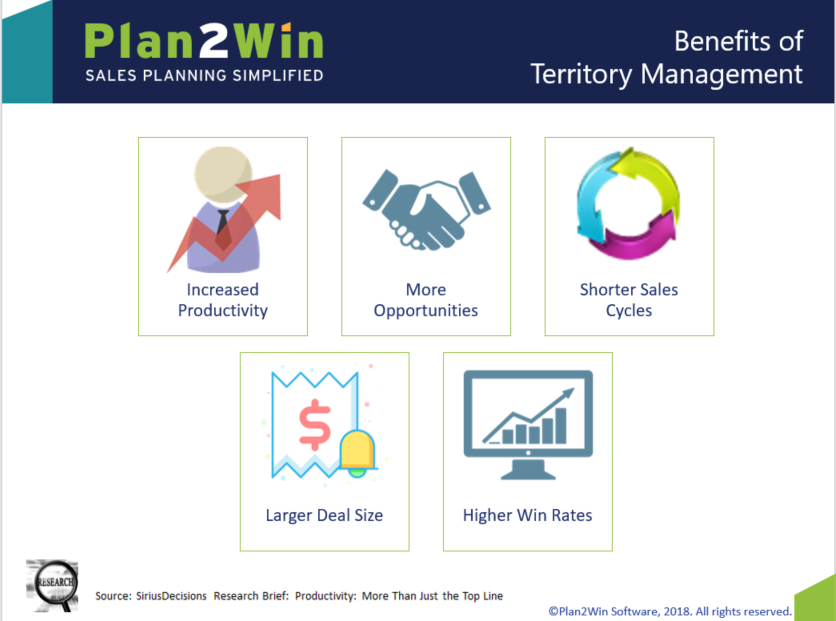Opportunity-Account Management; Virtuous or Vicious Cycle?
Posted by Ron Snyder in Account planning, Key Account Strategy, Opportunity Management, Sales Management | 0 comments
By Ron Snyder of Plan2Win Software and Jim Naro of The Naro Group
When do you actually cross the finish line? Is it when you win the first deal?
- Opportunity management is a “won and done” achievement
- Account planning is just a once-a-year effort
- Account planning and opportunity management are independent efforts that require mutually exclusive skills, processes and vernacular
- Building your relationships and sphere of influence is part of account planning only; it’s not part of opportunity management
- It’s OK to implement these processes in silos within the organization
Create a Virtuous Cycle to Close the Gap
- Win the deal with skillful opportunity management
- Identify future opportunities with effective account planning
- Repeat
Too often, salespeople are focused on just winning the deal. They adopt a “won and done” attitude. But if they see the deal all the way through its implementation, all the key players will be more pleased with the results. Then they can use their success story to help win the next opportunity and maintain a lasting business relationship.
Those who go beyond opportunity management into account planning are more successful because they are building a more strategic and holistic presence in their accounts, enlisting support from all the key players.
Build on Successful Opportunity Management with a Winning Account Plan
Key elements from your team’s opportunity management process will “seed” their account planning process. Further, it is important to develop a strategy with the key players in the account that they are committed to; rather than a plan that is just internal to your organization.
1. Understand the customer’s business drivers
Business drivers are important operational, financial, organizational, and/or technological
characteristics and trends. They might be related to revenue and profit growth, cash flow
improvements, cost decreases, keeping up with industry shifts, or adding new products/markets.
Salespeople need to talk to buyers about what they need to move beyond the status quo to achieve
breakthrough outcomes, and discuss how to help facilitate that change.
2. Generate a competitive strategy
As a vendor, your challenge is to prove that your team is the customer’s best resource; you will
provide better solutions and more value than any other colleague or vendor. Your team’s strategy
for helping accounts get results for their business objectives must be compelling enough to
overcome an even bigger competitor – No Decision, Inc.
3. Develop a sphere of influence with key players
It used to be that you needed to convince only one buyer with a budget that you were their vendor of choice. Now the average size of a B2B buying team size is 7 people, according to IDC. While your sales rep may have a good account advocate, he or she must still build relationships with the entire decision-making team to learn what their spending priorities are and ensure your offerings are approved and funded.
The buyers aren’t the only people salespeople need to rely upon for a successful implementation. They also need to develop relationships with those who execute the project and those who understand all the change management issues the account may face.
4. Establish metrics for success and follow up regularly
The most empowering question to ask a buyer is, “How would you measure success for your investment or project?” By following up with an account on how their results measured up, salespeople can ensure the implementation is on track and offer additional services as needed. They can learn about other ways your offering impacts the account and be better equipped to leverage the success in one unit to build referral relationships within other areas of the account.
Defining account success gives your team the opportunity to celebrate their champions and to provide more value to the account.
Strengthen Core Tactics to Increase Probability of Success
These strategies are equally valuable in both opportunity management and account planning:
- Respond to key trends and industry changes with a SWOT analysis
- Leverage contacts and share information across your whole team, including accounts and partners
- Utilize limited resources effectively
- Create and implement action plans that can be easily monitored and regularly updated
- Conduct Win/Loss reviews as a team to share best practices and learn from each other’s challenges.
- Build opportunity management and account planning into your monthly, quarterly and annual calendars
The Bottom Line
CSO Insights reports that 25% of sales organizations have a win rate of less than 25% and quota attainment of 40%. However, the top sales organizations have a win rate of greater than 65% and 65+% quota achievement. Using effective opportunity management and account planning can help your organization be top performers.
Your Next Steps
Click here to use our
free strategic account management scorecard to see how you’re doing.
Call us for a complimentary 30-minute consultation to learn more about how you can improve your team’s opportunity management and account planning.
The Naro Group specializes in helping technology companies capitalize on their investment in sales process and sales training.

